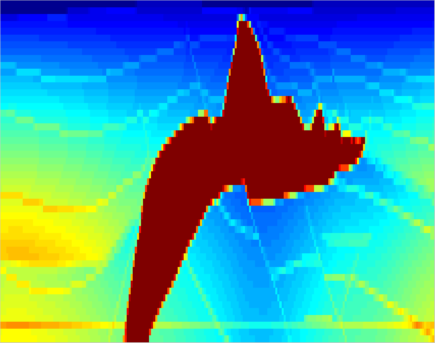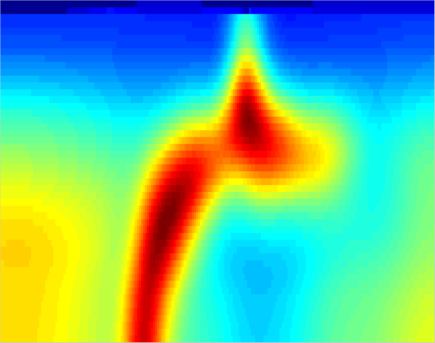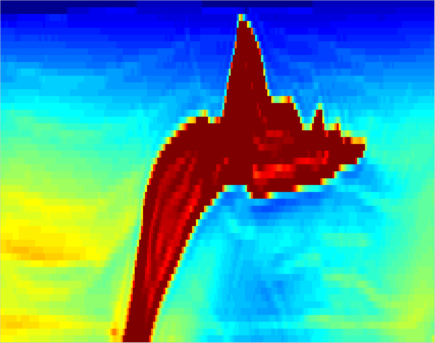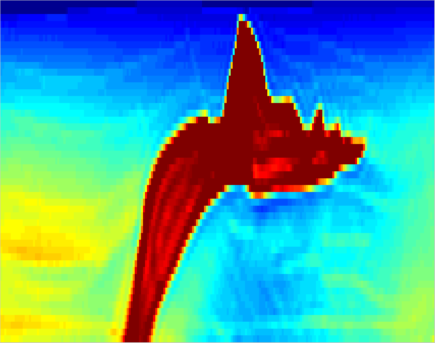Multisource Full Waveform Inversion of Marine Data with Frequency Selection




Figure 1. (Upper left) Actual velocity model. (Upper right) Initial velocity model.
(Lower left) Standard FWI after 69 iterations. (Lower right) Multisource FWI after 262 iterations.
Objective: Learn how to carry out FWI, specifically using multisource with frequency selection.
Procedure:
- Download the codes fwi_marine_Huang.zip.
Run: unzip fwi_marine_Huang.zip
Then: cd software_csim2013 - FFTW 2.1.5 is needed and you can configure it in the file Makefilef90.config. Assuming you have Intel Fortran compiler, compile all the code by running
make - Forward modeling, by running
make runforw
Verify that the CSG's have been generated, by
ls csg2saltsub3_8 - Run standard FWI, by
make runsing
Verify that the velocity models have been generated per iteration, by
ls fwiout2
For example,
salt_213x50_fwi_B60_69.dat means:
The model is of size nx=213 (fast dimension) and nz=50.
There are 60 supergathers. Since there are 60 sources in total, this implies individual sources being used
at the 69th iteration.
grd_Salt_213x50_B60_69.dat is the counterpart for the gradient. - Run multisource FWI, by
make runmultb
Verify that the velocity models have been generated per iteration, by
ls fwiout2b
For example,
salt_213x50_fwi_B1_262.dat means on the other hand:
"B1"---There are 1 supergathers, implying multisource encompassing all sources;
at 262th iteration.
- Use your favorite tool to plot out the velocity models salt_213x50_fwi_B60_69.dat and salt_213x50_fwi_B1_262.dat , which are on the lower row of Fig.1.
- The true and the initial velocity models can be found in the directory tomodat, named salt_velSub3_ny213_nz50_d90ft.dat and salt_velSub3Sm6_ny213_nz50_d90ft.dat, respectively. They are shown on the first row of Fig.1.